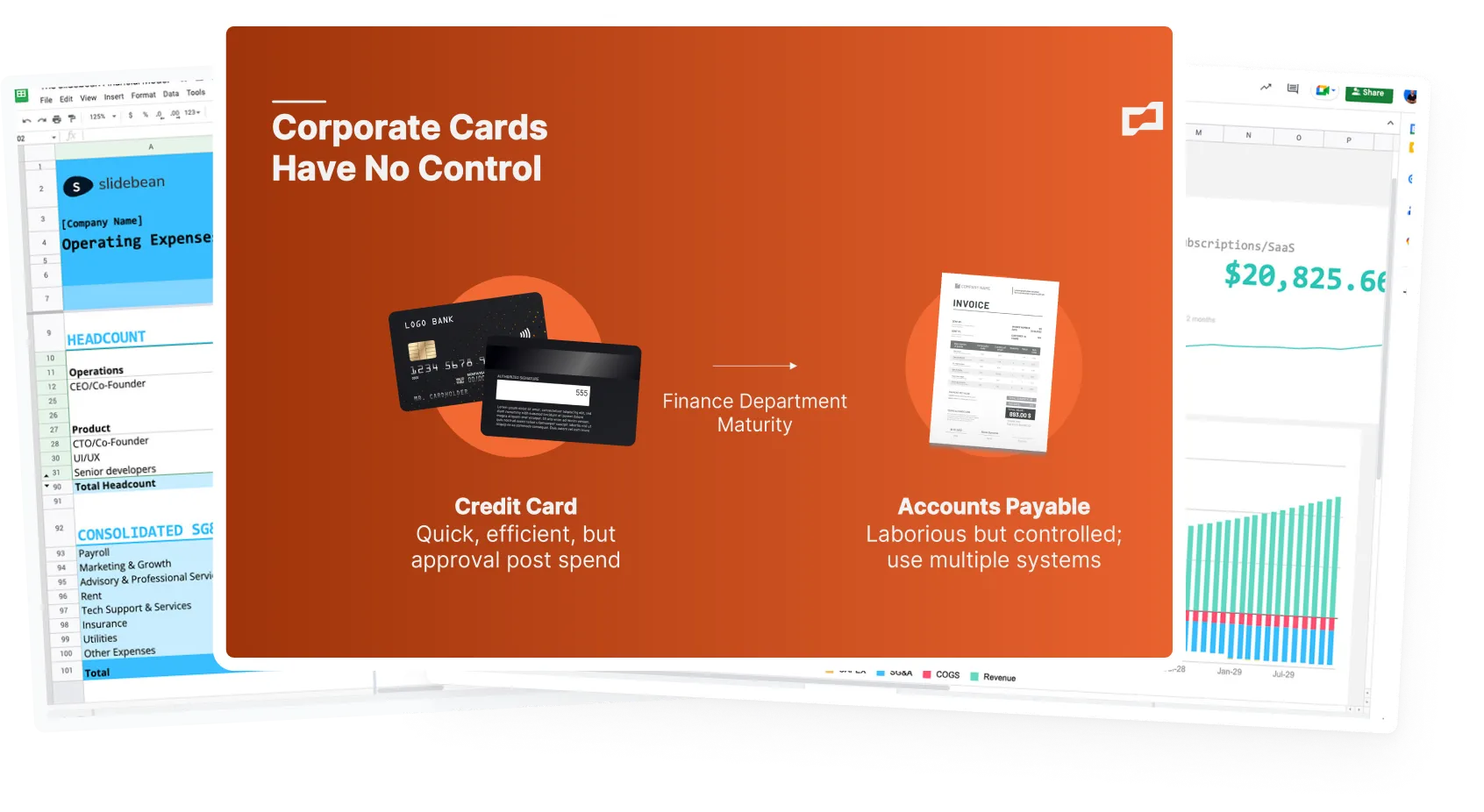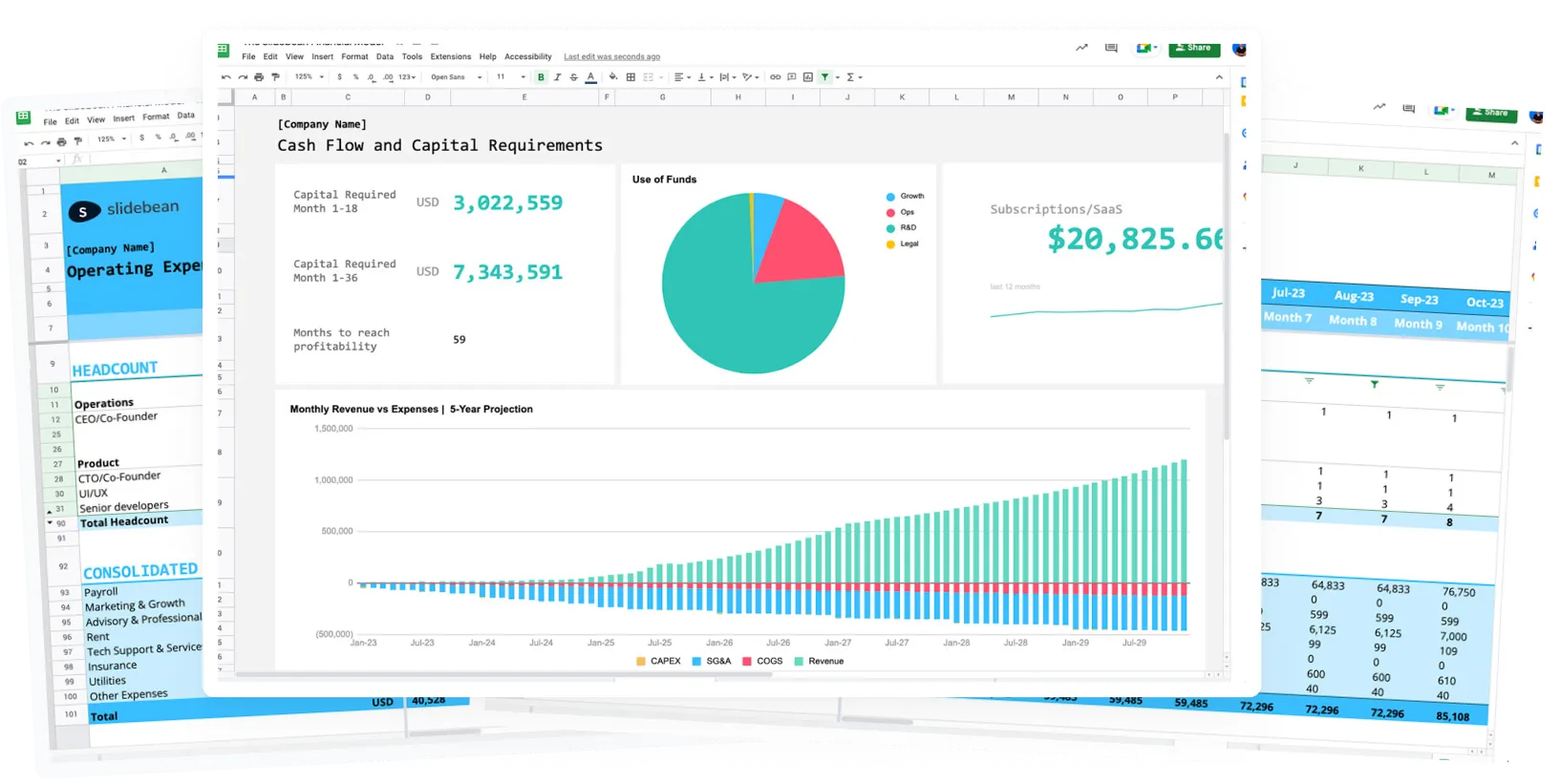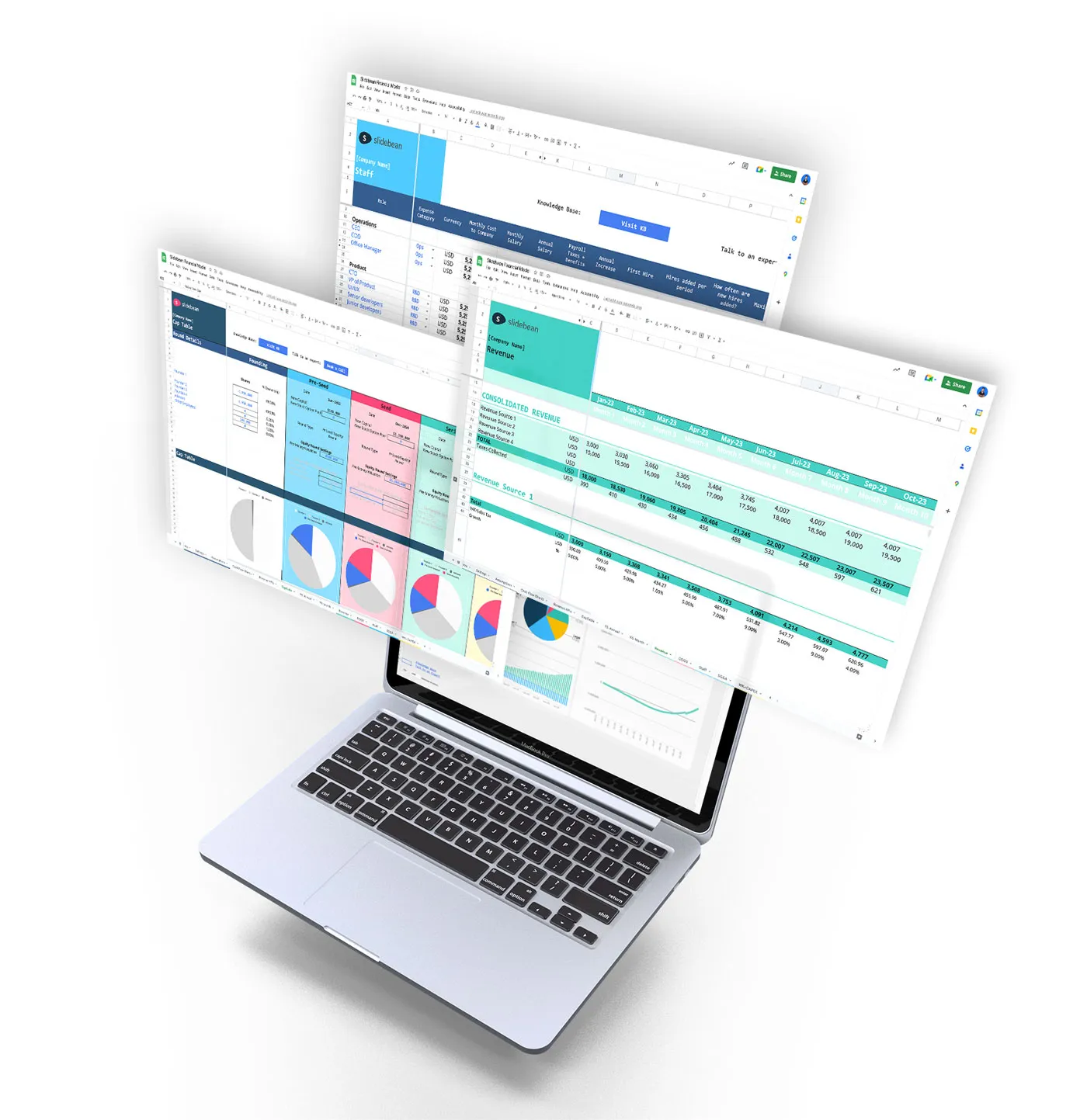Why Financial Modeling Matters for SaaS Startups
.webp)
If you're running a SaaS startup, you’ve probably heard you need a financial model. But what does that actually mean—and why is it so important?
Think of your model as a roadmap. It shows where your business is going and what you’ll need to get there. And if you’re raising money, investors will expect you to have one. But here’s the tricky part: your projections need to be exciting enough to attract interest—but not so unrealistic that you lose credibility.
Let’s break it down.
Why Your Financial Projections Matter in Fundraising
When investors look at your pitch, one of the first things they ask is, “How will this business grow?” A good model gives them a clear answer. It shows:
- How you plan to get customers.
- How much money you’ll make from each one.
- What it will cost to grow your team and scale.
It’s not about guessing—it’s about having a plan that makes sense.
Explore our SaaS Financial Model Template – a comprehensive tool to project your startup's financial future.
Striking the Right Balance
In our SaaS Financial Model tutorial, Caya walks you through how to balance excitement with realism:
- If your numbers are too small, investors might not get excited.
- If they’re too big, they might not believe you.
Start with your go-to-market strategy: Are you bringing in customers with ads? A sales team? Organic content? Your growth should be tied to real actions and real costs.
Different SaaS Sales Models (And How to Model Them)
There’s no one-size-fits-all SaaS strategy. Most startups use one of these:
- Self-Service: People sign up on your site, no sales team needed.
- Lower price points ($10–$200/month).
- Driven by online traffic and paid ads.
- Inbound Sales: Leads request demos or info, then a salesperson closes the deal.
- Usually priced around $500–$1,000/month.
- More complex; you’ll need to model rep capacity and lead conversion.
- Outbound Sales: Your reps reach out to potential clients.
- Often higher prices ($10k+ annually).
- Slower ramp-up but higher customer value.
Each of these models behaves very differently once you start modeling traffic, conversion, and churn. We broke them down in this article to help you figure out which one makes sense for your business.
Key Metrics You’ll Want to Track
These are the numbers every investor cares about:
- CAC (Customer Acquisition Cost): What it costs to get a paying customer.
- LTV (Lifetime Value): How much revenue you earn from a customer over time.
- LTV:CAC Ratio: Healthy SaaS businesses aim for 3:1.
- Churn Rate: How many customers you lose. Keep it under 5% monthly.
- MRR/ARR Growth: Are you growing month to month?
- Burn Rate & Runway: How much cash you’re spending—and how long you can last.
Use Your Model as a Planning Tool
The best part about modeling? It helps you test your strategy before spending a dime. If your CAC is too high, or your churn wipes out growth, you’ll see it in the numbers. Then you can adjust before hiring or scaling.
Final Thoughts
Your financial model isn’t just for investors—it’s for you. It helps you:
- Spot risks before they become problems.
- Understand how your business grows.
- Plan your hiring, marketing, and funding needs.
A simple, smart model makes you a better founder. And it gives investors a reason to believe in your plan.
Get the Slidebean SaaS Financial Model – a proven tool to map out your startup's growth and funding plan.






.avif)

